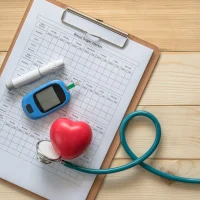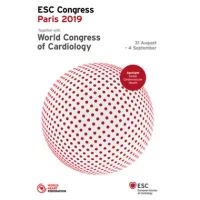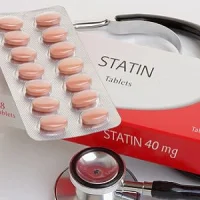The benefits of low-dosages of aspirin (75-100mg daily) for the secondary prevention of cardiovascular diseases (CVDs) exceed the risk of bleeding. However, most are still unclear whether aspirin has the same effects on primary prevention.
The recent results from three trials ASPREE, ASCEND and ARRIVE each tested the effects of 100mg of aspirin vs. placebo for atherosclerotic vascular disease (ASCVD) in elderly patients, diabetic patients and non-diabetic patients with major cardiovascular disease risk factors, respectively.
Including the results of these three new trials, a meta-analysis of 13 trials for the primary prevention of CVDs using aspirin only noted a small benefit, as significant as the risk of major bleeding. Currently, it is unknown whether we can increase the vascular benefits of aspirin use without increasing the risk of bleeding, as the benefits of aspirin and ASCVD risk are relatively proportional to each other.
It, therefore, might be suggested that aspirin is given to seemingly healthy patients with increased ASCVD risk but a low risk of bleeding. Due to the strong link between ASCVD and bleeding, age playing a major role in this, there are not many patients that match the criteria. Considering this, it may be possible to select this subgroup based off of individuals’ allelic variation.
Coronary artery disease (CAD) and hypertension are linked with multiple chromosomal loci. An example of this is chromosome 4q32.1 which regulates GUCY1A3 gene expression. This gene is responsible for encoding the alpha-1 subunit of the soluble guanylyl cyclase (sGC). The sGC protein is stimulated by nitrogen oxide generated by endothelial cells and goes on to produce cGMP – a second messenger which inhibits platelet aggregation and causes smooth muscle relaxation.
It has been discovered that homozygous patients having a coronary intervention with the common-risk allele, GUCY1A3 rs7692387 (G), have increased platelet reactivity and may fit the criteria for benefitting from low doses of aspirin for primary CVD prevention. In a study conducted in the European Heart Journal, individuals were trialled on this basis.
In the ‘hypothesis-generating’ trial, 23294 European women found using the Women’s Genome Health Study (WGHS), took part in a randomised trial of aspirin vs. placebo. In the subsequent trial to confirm the hypothesis generated, the ‘hypothesis-testing’ trial, a selection of European men from case-control studies of strokes and myocardial infarction (MI) were used from the Physician’s Health Study (PHS), of a total of 22071 participants.
The effects of aspirin vs. placebo were tested against each genotype (GG, GA or AA). The first trial conducted saw that the women in the WGHS were participants before being given treatment, so it is unlikely that this trial carried any bias. However, the ‘hypothesis-testing’ trial of the men in the PHS study did not compare the genotypes and the effects of the aspirin directly. As this was predicted using conditional logistic regression based on the smoking history and age of participants. Due to this design, it could be possible that the benefits of aspirin on the different genotypes may carry bias.
The results from the WGHS trial were quite significant and showed that when aspirin was taken, the homozygous (GG) patients had a reduced risk of cardiovascular events by 17%, while the GA/AA genotypes had an increased risk by 39%. This was also mirrored in the PHS trial where the GG genotype had a reduced risk of 37% for MI or strokes, and the GA/AA genotype had an increased risk, by 32%. These results demonstrate that aspirin has a qualitative effect on the event of CVDs depending on the genotype as it either increased or decreased the risk, but whether this is biologically plausible is to be confirmed.
If these results are consistent with our current findings, we would be able to confirm that the bleeding risk associated with aspirin produced an opposing pattern for ischaemic outcomes in the different GUCY1A3 genotypes. Aspirin uses the same mechanism to produce the anti-ischaemic effects and to cause gastrointestinal bleeding, due to prostaglandin synthesis inhibition in platelets and the gastroduodenum. However, the results from the WGHS trial reported that gastrointestinal bleeding was quantitative across the different genotypes, with the risk increasing for both GG and GA/GG. This does not show consistency as if we were to draw conclusions from the results of the trial it would be assumed that the gastrointestinal bleeding risk would have increased in the GG genotype and possibly decreased in the GA/AA genotypes.
More information is also needed on the mechanism of aspirin resistance in the A allele and how this genotype can increase thrombosis risk. As the findings from the trials propose that individuals with the A genotype (which represents 1/3 of the population) go into bleeding diathesis and prothrombotic state after aspirin treatment. From what we already know about the widely-accepted mechanisms of action for aspirin, it is unlikely that these results are completely plausible.
As it is not known how the results generated from the trials would occur biologically, it must also be noted that in the WGHS trial, the GG vs. GA/AA effects of aspirin were not statistically pronounced. Also, the PHS trial confirming these results had limitations regarding the design. In the future, it may be beneficial to replicate the trials based on new data sets for either primary or secondary prevention using aspirin. However, for now, caution should be taken when drawing conclusions from these current studies.
Source: European Heart Journal
Image Credit: iStock










